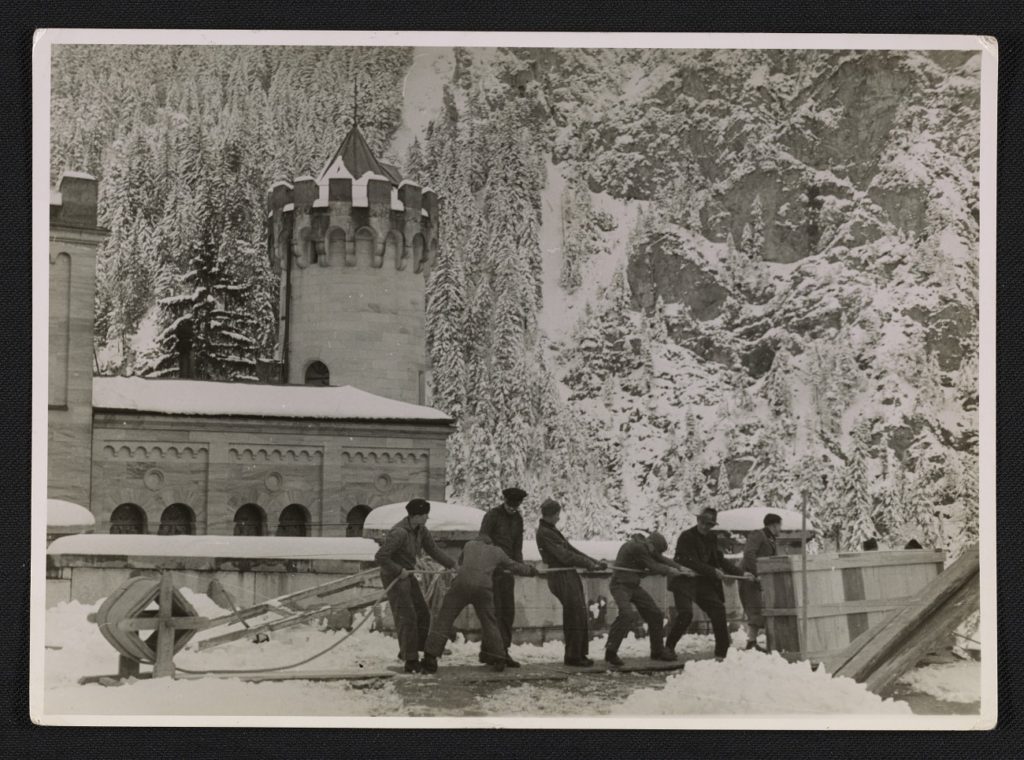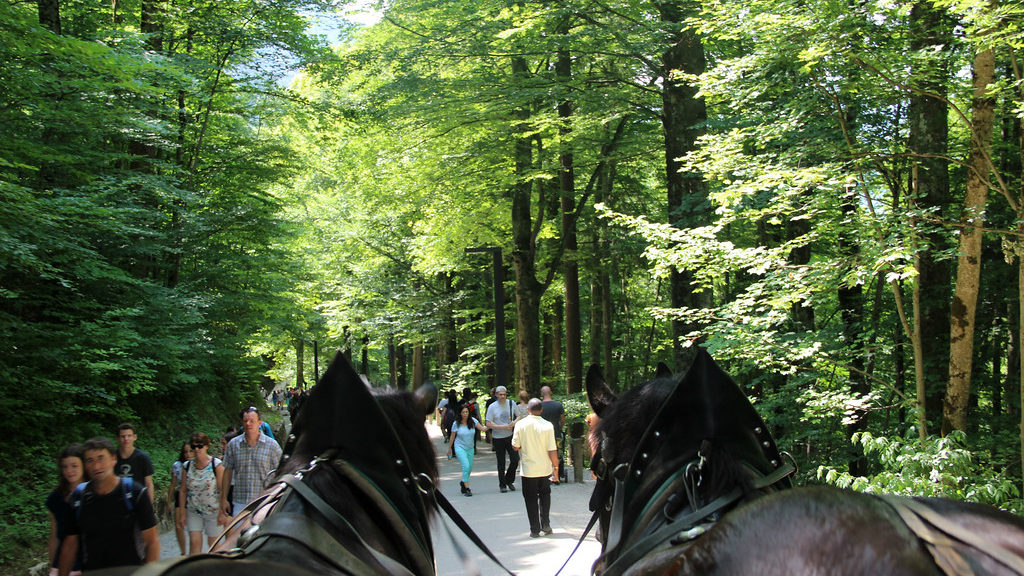
Liechtenstein and Neuschwanstein Castle
Today we would visit Vaduz, Liechtenstein which is Liechtenstein’s capital. Liechtenstein is only 64 square miles making it the fourth smallest country in Europe. The residents enjoy a high standard of living. There is less than 2% unemployment.
As we approached Vaduz, we saw the Vaduz Castle. It is the palace of the Prince of Liechtenstein – his official home. It was acquired by the family in the 1700’s. The latest restoration occurred in the early 1900’s. There is a model of Vaduz Castle in the city. Later we would drive to Hofkellerei where we enjoyed a wine tasting from the Prince’s private wine cellar.


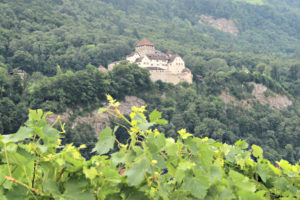
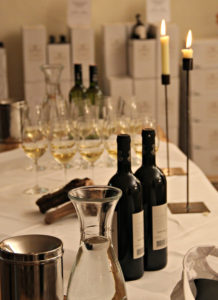
We took a walking tour in Vaduz, primarily in the area of the Peter Kaiser Square. The first building is the Town Hall which was built in the 1930’s. The stone-carved coat of arms was added in the 1980’s. The next picture is the Government House. It serves as the executive branch and includes the offices of the Prime Minister and four ministers. They report to both the Parliament and the Prince.
The next three pictures are of the Parliament Building. It opened in 2008. It is comprised of more than one million bricks, 600 tons of steel and almost 7,000 cubic meters of concrete. Some of the Parliament’s responsibilities include legislation, fiscal sovereignty, and treaties. These buildings all comprise the government quarter.
Stamps with a postmark from Liechtenstein are very popular souvenirs. There were actual reproductions of some of the stamps on the “stamp picture walk” on Peter Kaiser Square. Several pieces of outdoor art were also featured on the square. The one depicted below is made of bronze and is entitled “Phoenix.” The artist is internationally-renowned. I also included a statue of two pigs – not in bronze and the artist is probably not as well known – but I liked them!


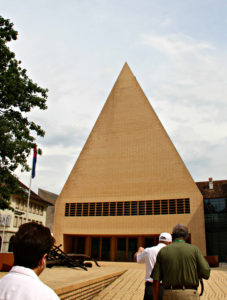

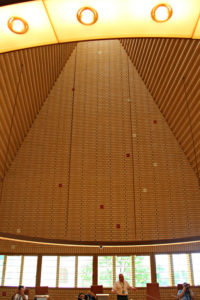


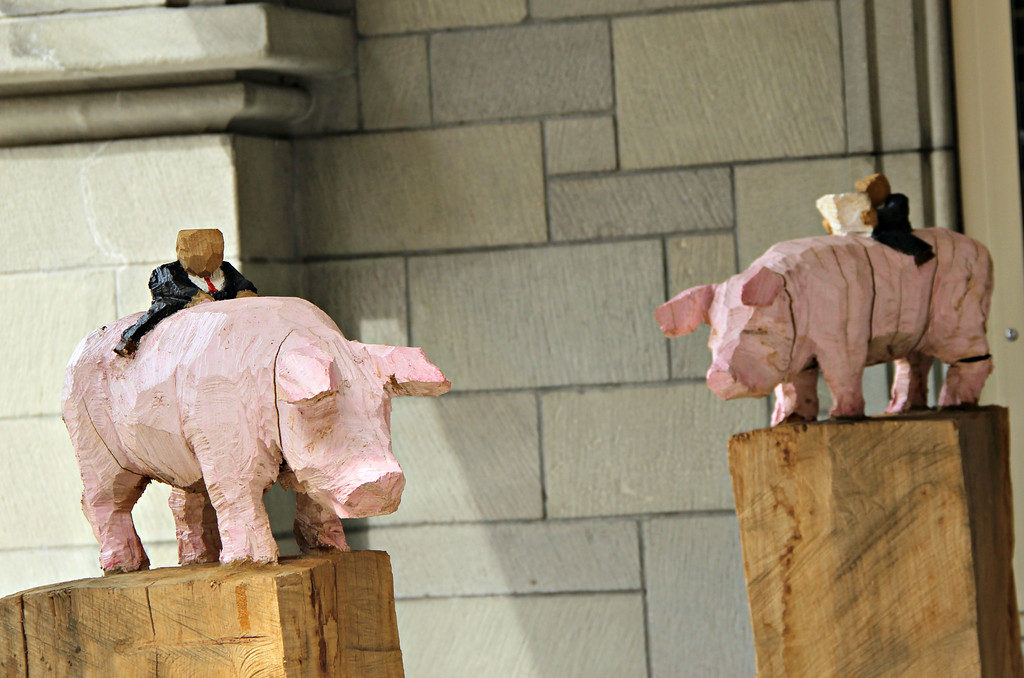
The next day we went to see the Neuschwanstein Castle. Our bus took us to the town of Hohenschwangau. From here, we took a horse and buggy ride to get us closer to Neuschwanstein Castle. Tauck had reserved these for us which saved considerable time. We were in Bavaria so the ride was beautiful. When the ride came to an end, we still had a walk to where we would enter the castle.

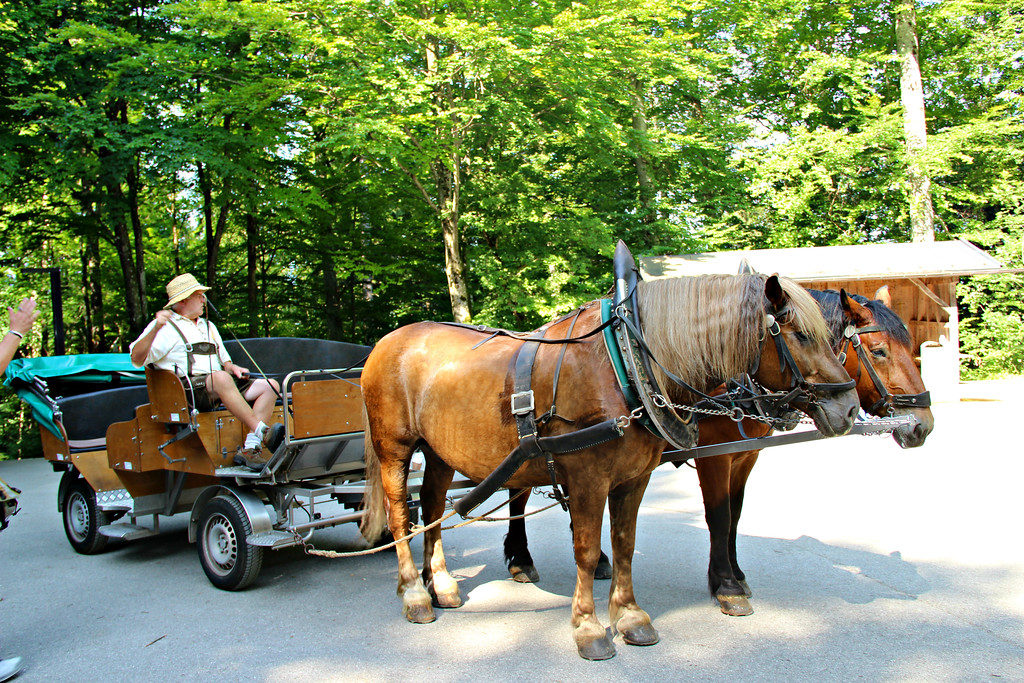


These are some of the pictures I took of Neuschwanstein Castle. It is said to be the inspiration for the castle at Disneyland. The castle was built for King Ludwig II atop Jugend Mountain. King Ludwig II was declared mentally incompetent and died a very short time thereafter – it was never determined if he was murdered or committed suicide. He only spent eleven nights at the castle before his death in 1886. The interior of the castle was never completed – in large part due to a lack of funds. His family cancelled outstanding contracts after his death. Neuschwanstein Castle was supposed to be a private retreat for King Ludwig, but shortly after his death it was opened to the public and became a money-maker which continues today – in the summer, there are nearly 6,000 visitors daily. We were not able to take pictures inside, but the parts completed were incredible – some perhaps better described as outrageous. His bed was made by fourteen woodcarvers and took four years to complete. There was an artificial cave next to King Ludwig’s study, complete with stalactites and a fountain.

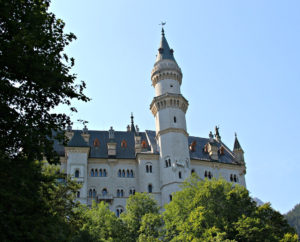
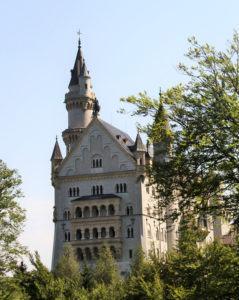
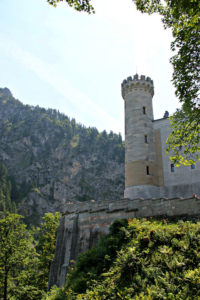
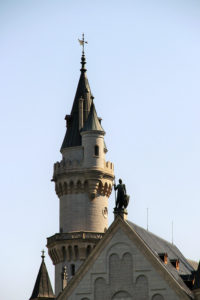
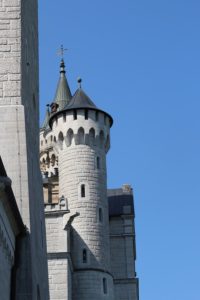
King Ludwig was very involved in the plans for the castle. Building began in 1869. It was to include several buildings including a gateway building, knight’s building, and palace. These exteriors were all completed, but as noted earlier, the interior of the palace was not complete. The first three pictures below are of the gateway building. The complex was also to include a keep (which is a fortified tower and serves as a place of refuge if attacked) and a chapel which would have been on the first floor of the keep. Though never completed, they were planned for the upper courtyard of the castle (this would have been in the area of the last picture in this section).




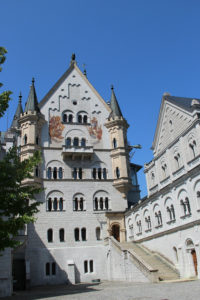
From some of the open areas in the Neuschwanstein Castle, we also had views of Hohenschwangau Castle. This was built by King Ludwig II’s father, King Maximillian II of Bavaria in 1832. An older castle, Schwanstein, was originally on this site and replaced by Hohenschwangau Castle. This was the castle where King Ludwig grew up. It makes for beautiful views with Lake Alpsee in the background.
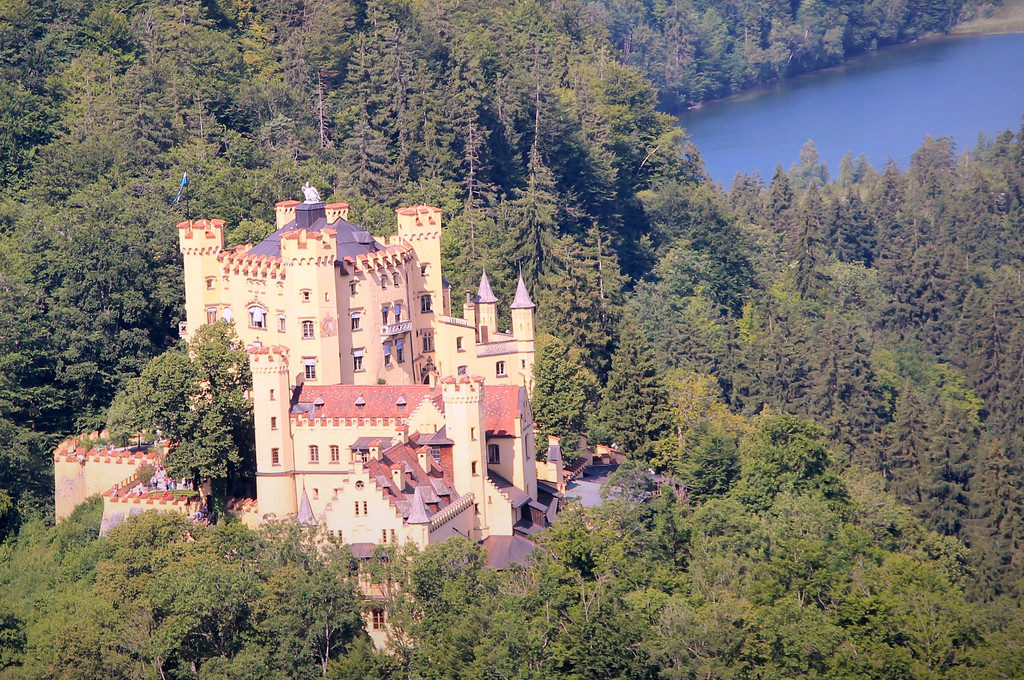
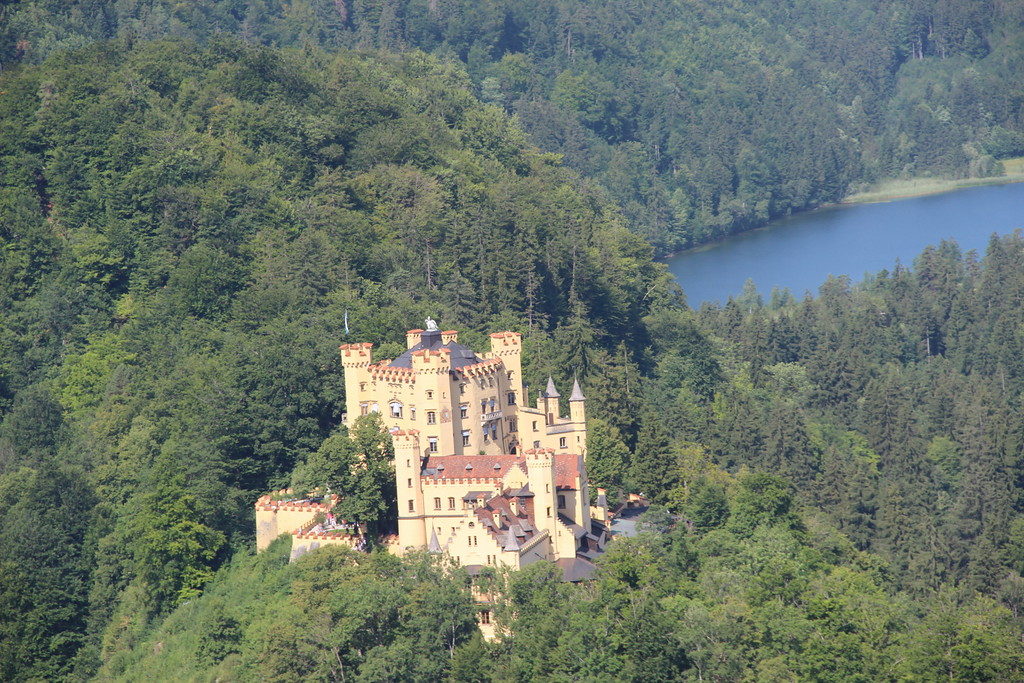
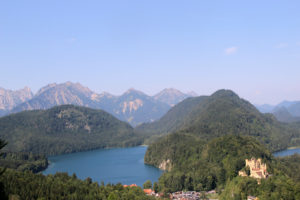
Quite awhile after writing this entry, I watched the movie, The Monuments Men. The “Monuments Men” were small groups of soldiers with a background in art whose mission was to find art stolen by the Nazis and return the pieces to their rightful owners. Some of the art was hidden in a castle and as I watched the movie, I was pretty sure I recognized the castle. I did a little research and found that Neuschwanstein Castle was indeed one of the places where the Nazis hid the artwork they had stolen. It was actually an ideal place. King Ludwig had built the castle as a retreat away from the public and the castle was unfinished, meaning there was a great deal of space that could be used for storage. There are several references you will find if you Google “monuments men;” one I found interesting was from the Smithsonian at https://www.aaa.si.edu/exhibitions/monuments-men/exhibition-interactive. The picture below is from this cite and shows some of the Monuments Men moving boxes of art from the castle. You will see one of the castle’s turrets in the background.
